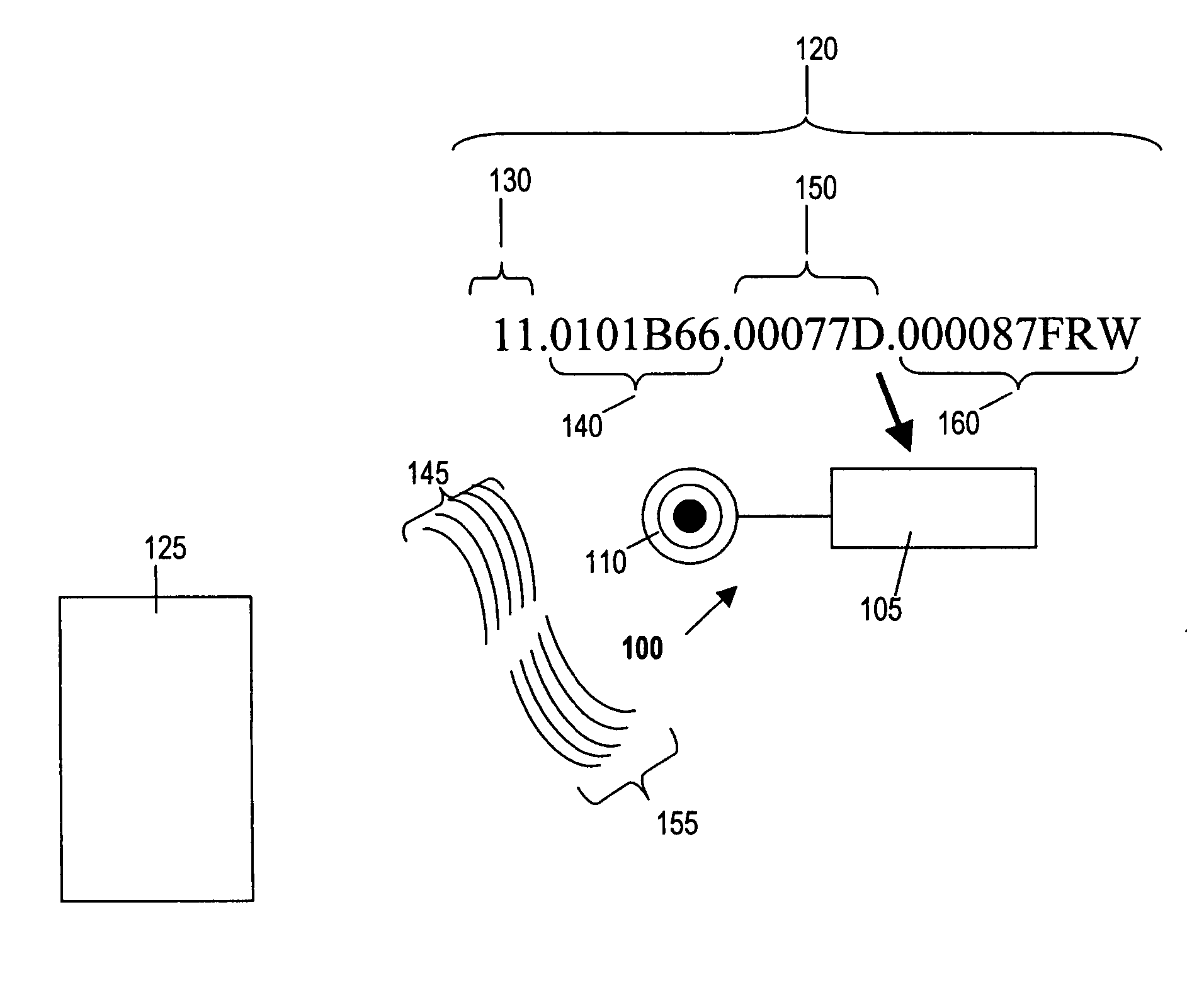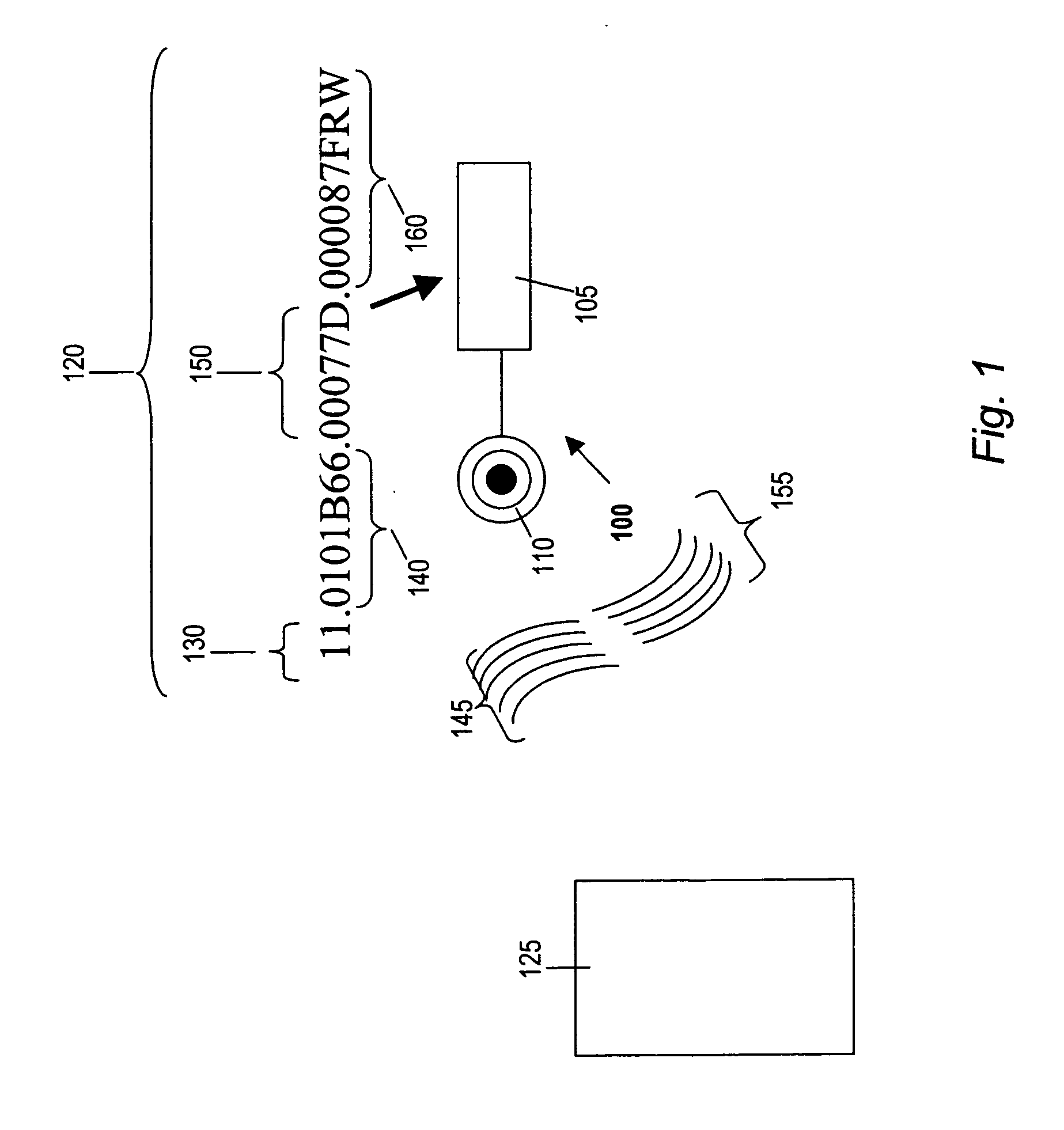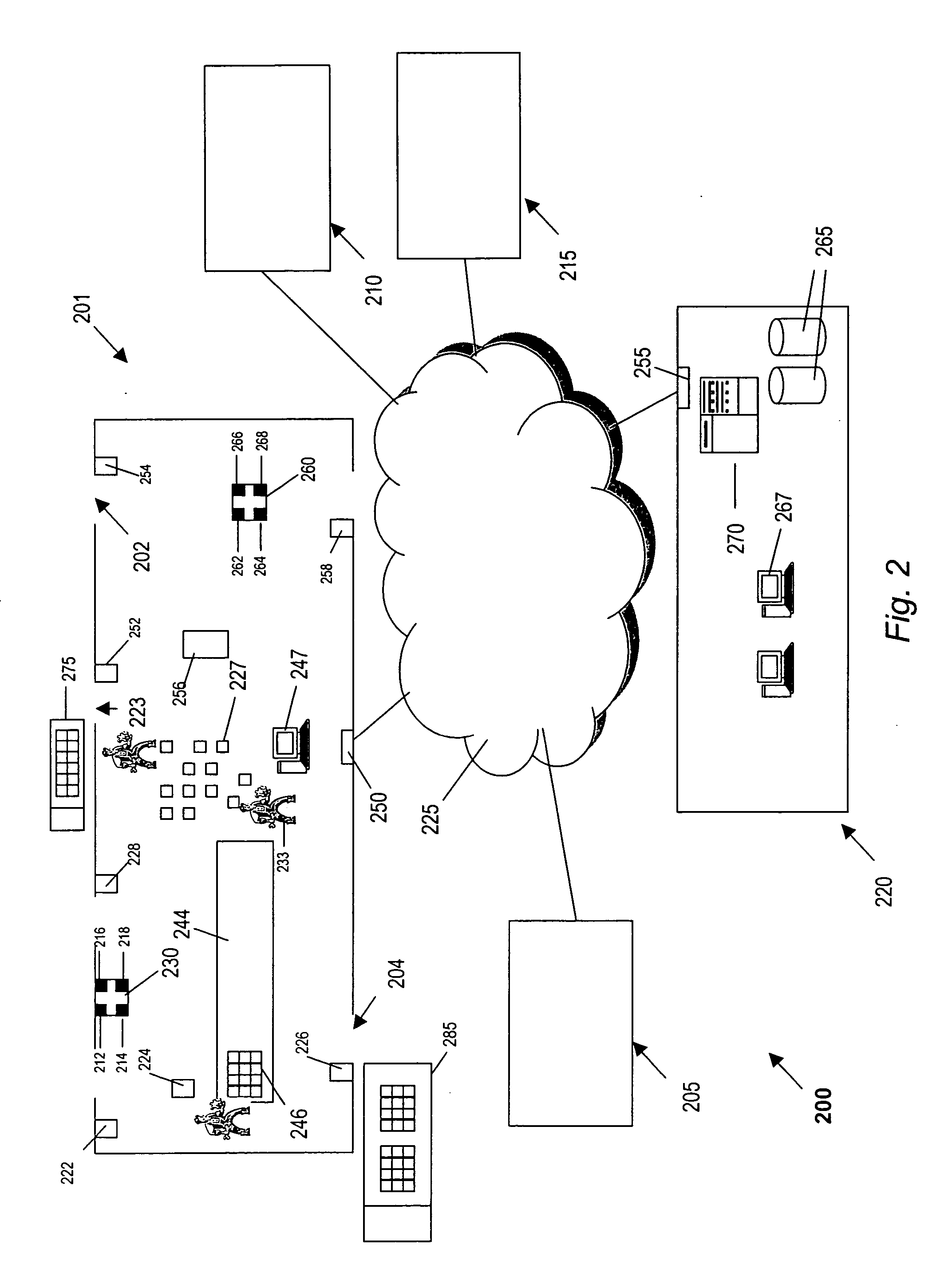Locating, provisioning and identifying devices in a network
a network and device technology, applied in the field of provisioning devices in networks, can solve the problems of preventing the realization of bar codes, wasting rf engineers considerable time and energy, and wasting resources
- Summary
- Abstract
- Description
- Claims
- Application Information
AI Technical Summary
Benefits of technology
Problems solved by technology
Method used
Image
Examples
Embodiment Construction
[0048] In this application, numerous specific details are set forth in order to provide a thorough understanding of the present invention. It will be obvious, however, to one skilled in the art, that the present invention may be practiced without some or all of these specific details. In other instances, well known process steps have not been described in detail in order not to obscure the present invention.
[0049] Although the present invention involves methods and devices for locating, identifying and provisioning individual RFID devices in a network, many aspects of the present invention can be applied to identifying and provisioning other types of devices in a network. For example, the present invention may also be used for locating, identifying and provisioning manufacturing devices, networked sensor devices, IPphones, portable digital assistants and other networked devices, including wireless and wired devices. Similarly, although much of the discussion herein applies to imple...
PUM
 Login to View More
Login to View More Abstract
Description
Claims
Application Information
 Login to View More
Login to View More - R&D
- Intellectual Property
- Life Sciences
- Materials
- Tech Scout
- Unparalleled Data Quality
- Higher Quality Content
- 60% Fewer Hallucinations
Browse by: Latest US Patents, China's latest patents, Technical Efficacy Thesaurus, Application Domain, Technology Topic, Popular Technical Reports.
© 2025 PatSnap. All rights reserved.Legal|Privacy policy|Modern Slavery Act Transparency Statement|Sitemap|About US| Contact US: help@patsnap.com



